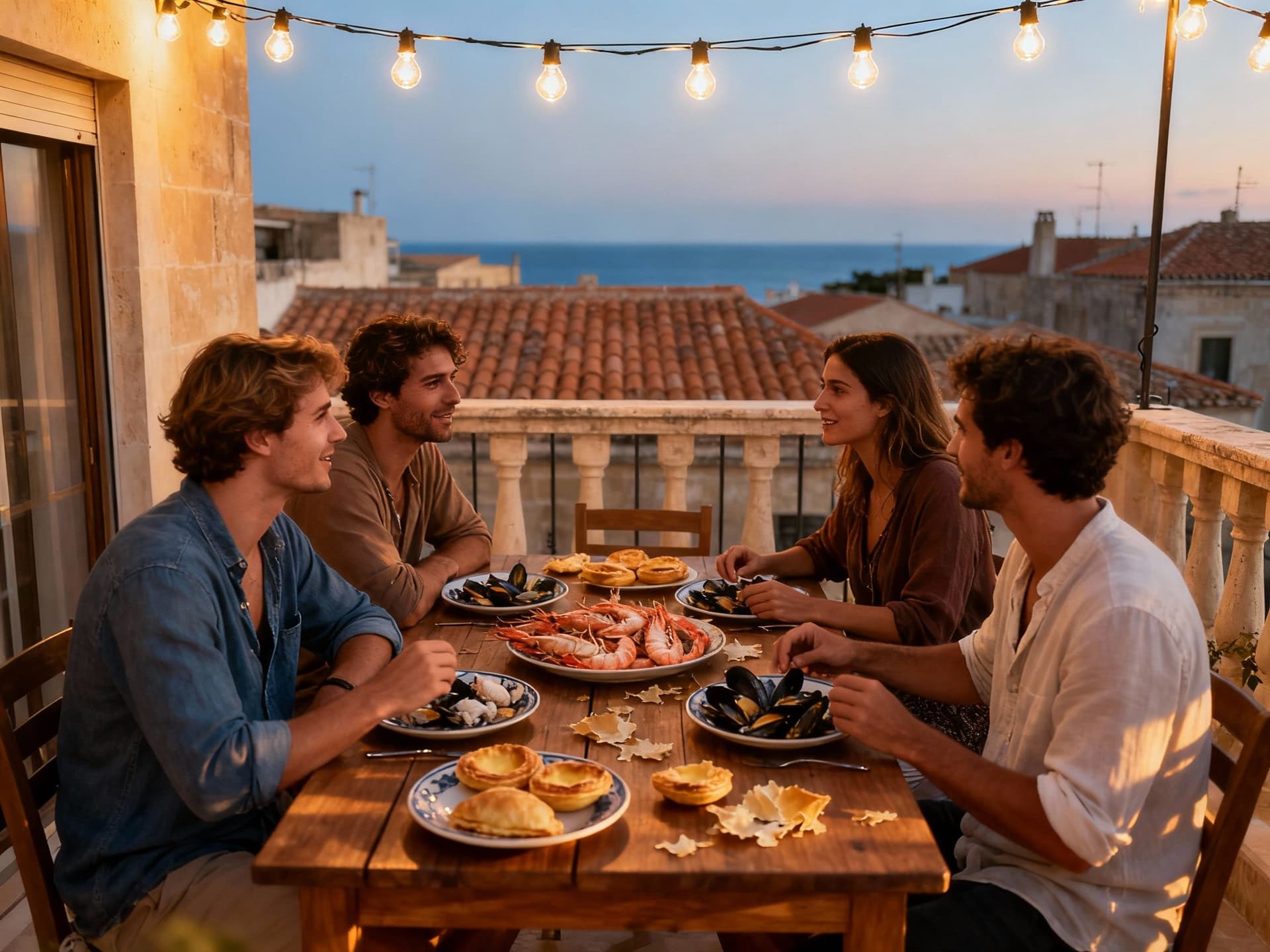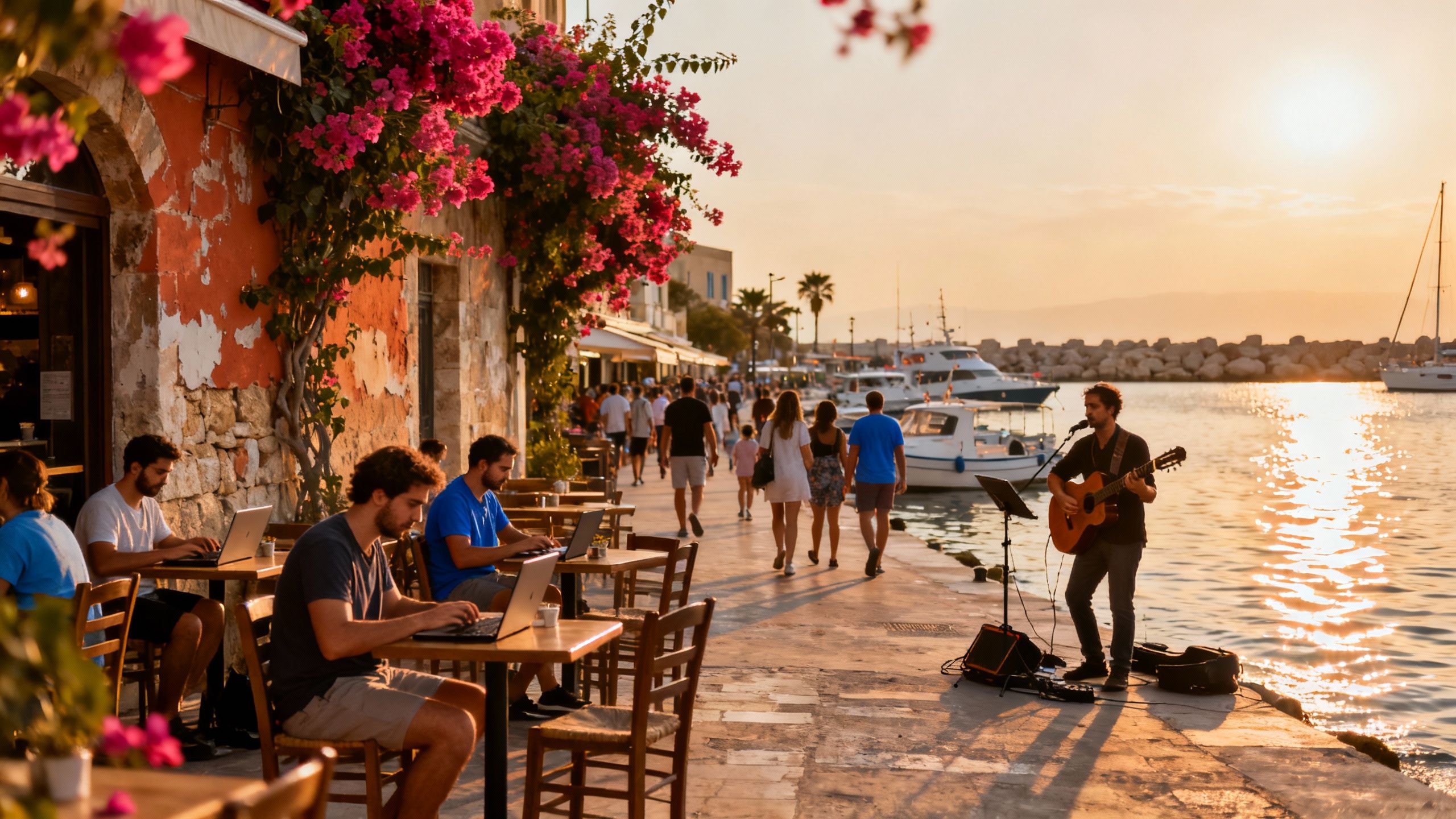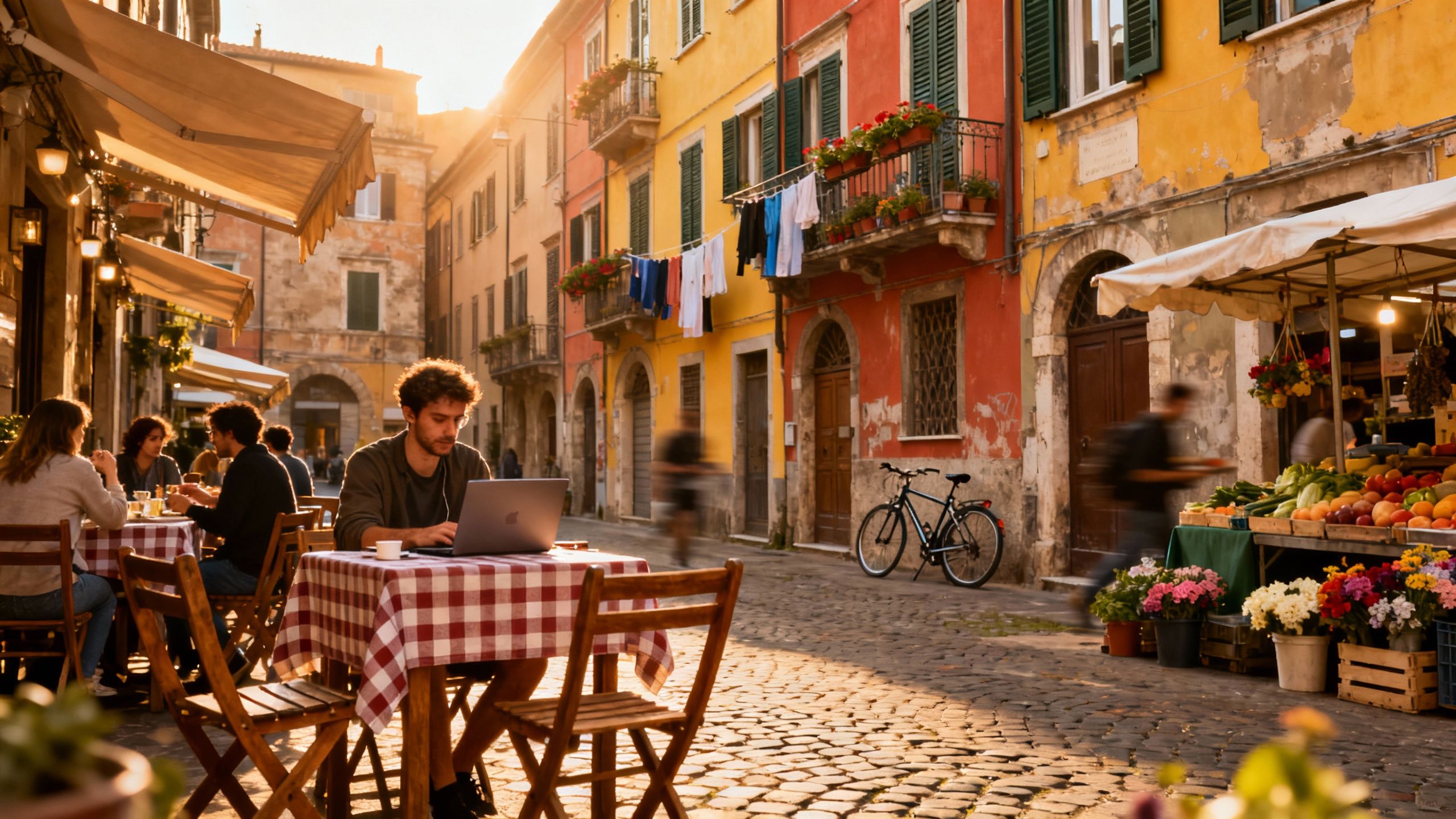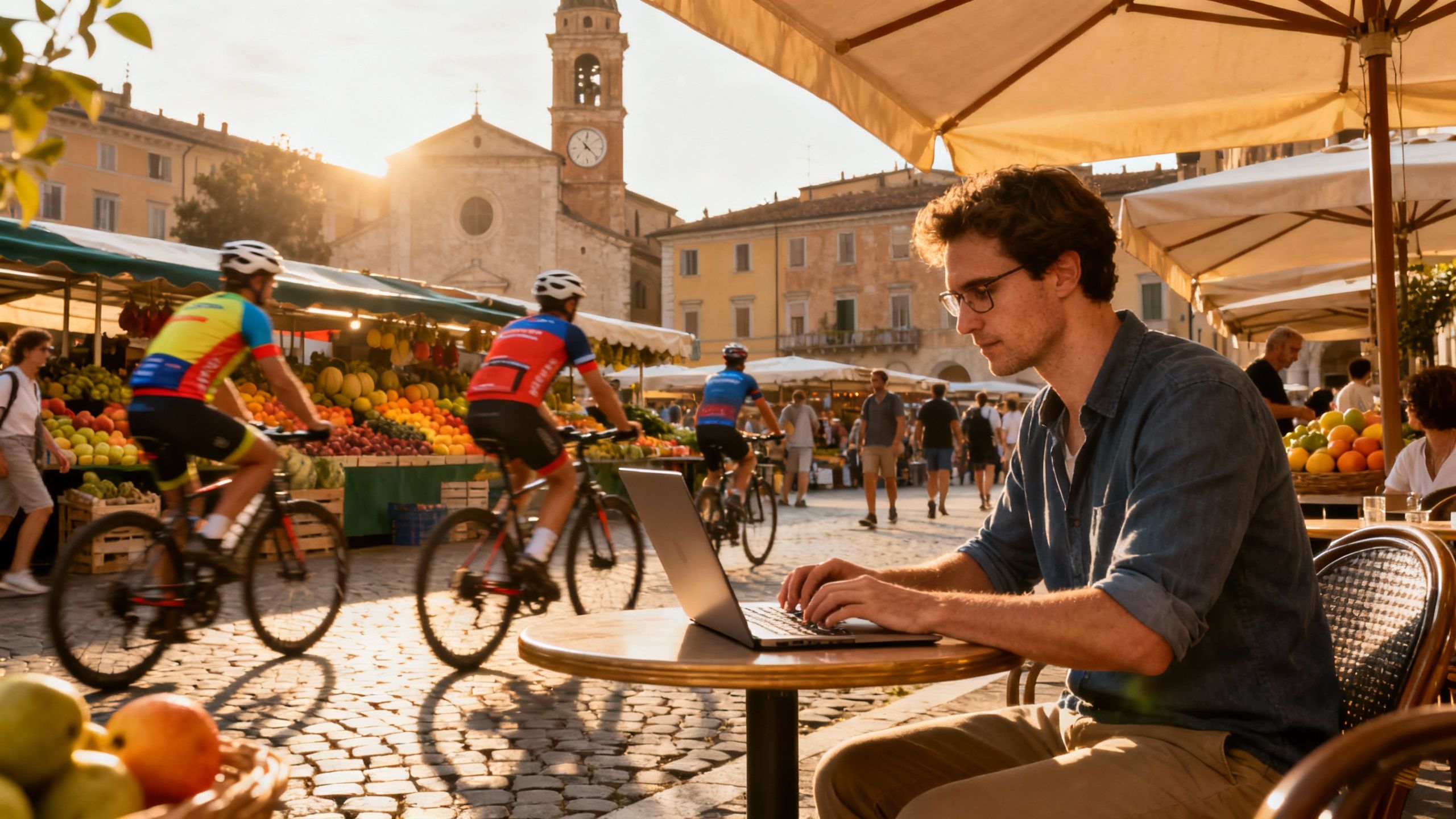Why Malta’s visa hype hides practical residency wins
Malta blends Mediterranean lifestyle with practical residency routes; match neighbourhood vibes to the right visa and let residency-savvy agents turn weekend visits into a settled life.
Imagine stepping out for espresso on Sliema’s promenade, laptop tucked under your arm, then hopping a 20‑minute ferry to Valletta for an evening of concerts and sea views. Malta compresses so many Mediterranean lives into a 27-by-14 kilometre island — postcard history, buzzy cafés, late-night festas and a surprisingly nimble set of residency programmes that quietly suit digital nomads, remote workers and new residents alike. This piece unpacks the reality: which Malta visas actually match a nomadic life, where the market surprises lie, and the neighbourhoods that feel like home the minute you arrive.
Living the Malta life: small island, big days

Golden light, limestone streets, and English in daily use — that’s Malta in a few words. Days here run at Mediterranean speed: long work blocks from bright cafés in St Julian’s or Swieqi, quick swims at Għajn Tuffieħa on weekends, and impromptu evening gatherings in narrow streets where neighbors really know each other. The island’s compactness means your weekend hike in Dingli Cliffs and your coworking desk in Floriana are often the same hour. For buyers, that translates to lifestyle tradeoffs — choose proximity to social hubs like St Julian’s and Sliema, or seek quieter village rhythms in Gozo or Mellieħa.
Neighbourhood pulse: Sliema, St Julian’s, Valletta
Sliema: seaside promenades, cafés, and apartment living — dense, lively and ideal if you want cafes-that-double-as-offices. St Julian’s (Paceville) is Malta’s nightlife and coworking cluster: expect bustling bars, international restaurants and plenty of short-term rentals. Valletta gives you UNESCO-laced streets, classical architecture and quieter mornings; it’s small, steep and feels like living inside a history book — brilliant for culture lovers but less about wide terraces and more about charming terraces with views.
Food, markets and weekend rituals
Start with pastizzi for breakfast, move to Marsaxlokk’s Sunday fish market for seafood that tastes like the sea itself, and finish at a local festa where band music fills the square. Dining is social and seasonal: in summer you’ll chase rooftop aperitifs, in winter you’ll fall for warm, casual trattorias. Practical note: if you love daily fresh produce, living near the Marsa or Rabat markets makes a big quality-of-life difference and often influences which properties sell faster.
- Lifestyle highlights: café offices, beaches, and culture - Sliema promenade walks and sea-facing cafés - Spinola Bay (St Julian’s) for waterfront dinners and working by the sea - Valletta’s cafés and evening classical concerts - Marsaxlokk Sunday fish market for weekend rituals - Dingli Cliffs for sunset hikes and open-air reset
Making the move: residency paths that fit a nomad life

Malta’s residency options are often described in headlines, but the real story is granular. There’s the Residence Programme for EU/EEA/Swiss nationals, the Global Residence Programme for non‑EU residents, and specific paths for economically self-sufficient people and retirees. Each has different property or rental thresholds, tax implications and practical paperwork. Start by matching the visa type to how you plan to live: short stays and seasonal renting versus established local life with long-term leases or property purchase.
Property types and how they shape your routine
Apartments in Sliema or St Julian’s often offer immediate wifi-ready living and easy social life, but think noise and smaller terraces. Traditional townhouses in Mdina or Vittoriosa give old‑world charm and cooler summers, but may need renovation for dedicated home-office setups and better insulation. If you’re buying to support a residency application (some programmes require qualifying property), prioritise documented property status and energy performance — your agency should validate this before you sign.
How local experts actually help (and what to ask them)
- Work with agencies that understand both lifestyle fit and residency rules. Ask explicitly: do you handle paperwork for the Global Residence Programme or related permits? Can you confirm property qualifies as a “qualifying property” under residency rules? Do you have references from other nomads who used property purchases to secure residency? A local agent saves weeks of iteration — and more importantly, keeps you from buying the wrong property for your visa.
- Practical checklist before you buy - Confirm title, permit history and if the unit is an apartment or maisonette (NSO shows most new permits are apartments). - Validate connection quality: request documented broadband speeds and ask about fibre availability in the block. - Check development density and planned permits nearby — recent NSO data shows shifting new-build approvals that can change sunlight/views. - Verify whether the property meets residency ‘qualifying property’ rules if your visa depends on it. - Ask about local property management and short‑term rental restrictions if you plan to rent when away.
Insider knowledge: the small rules that change big decisions
Expat life in Malta is friendlier than you expect, but small cultural details matter. English is an official language and commonly used in business and schools, which eases the transition. Still, community life revolves around churches, local clubs and festa calendars — showing up matters. Seasonality is real: summers swell tourist-driven rental income and noise; winters are quieter and better for house hunting but expect local services to run at different rhythms.
Cultural integration and everyday tips
Becoming part of Maltese life means joining a local rhythm: learn a handful of Maltese phrases, patronise local cafés, and attend a festa. For paperwork, the Expatriates Unit and residency programme pages list requirements for non‑EU nationals — expect background checks, property documentation and proof of income or health insurance. Agencies that pair lifestyle scouting with residency know-how will flag documents up front and keep timelines realistic, which is invaluable when you’re juggling clients, deadlines and relocation logistics.
Long-term view: how life changes after year one
After 12 months you’ll notice the island’s smallness is a benefit: everything becomes familiar and friends multiply through co‑working spaces and language classes. Property-wise, older limestone homes often need maintenance but reward you with character and cooler interiors; modern builds cost more but often include insulation and parking. Plan for maintenance budgets, summertime visitor spikes, and decisions about whether to keep a property as a hybrid investment/home.
- Smart first steps (a 4-point starter plan) - Short test stay: rent in Sliema or St Julian’s for 1–3 months to vet commute, internet and noise. - Talk to 2 agencies: one with residency experience, one with neighborhood roots. - Verify property qualifies for your chosen residency route before making offers. - Budget a maintenance & contingency fund (historic properties can surprise you).
Ready to fall in love with Malta and make it your base? Start with a lifestyle test-stay, then bring a residency-savvy agent into the loop. Malta rewards people who lean into local life: show up at markets, learn a few Maltese words, and match the property type to how you want to spend your days. When you’re ready, an agency that understands both the island’s rhythms and its residency rules will turn the dream into a realistic plan.
Norwegian who has helped 200+ families relocate from Oslo to Spain; expert in relocation services and community integration.


